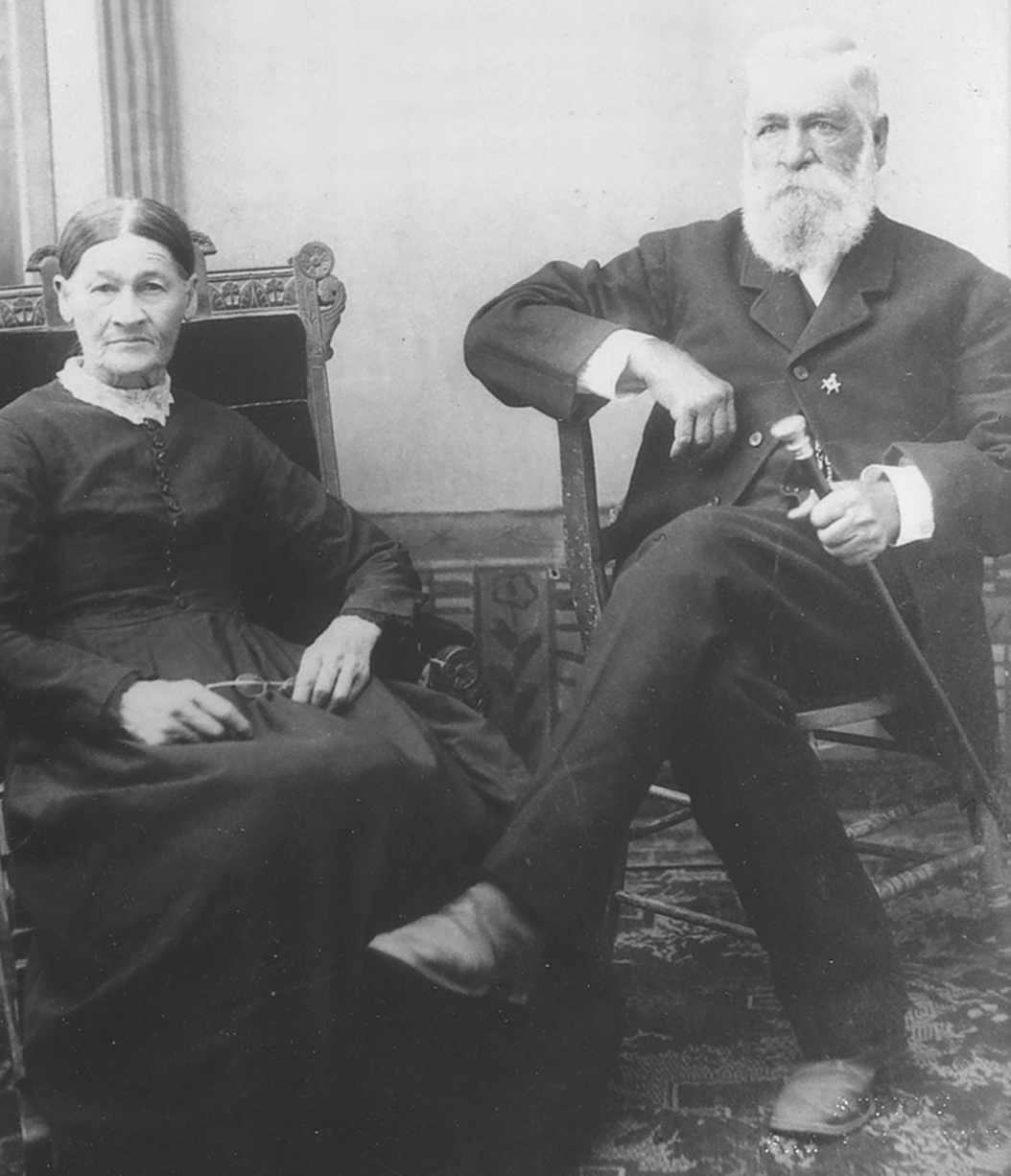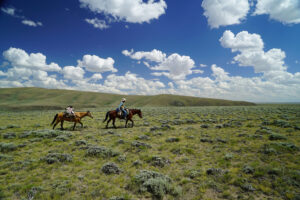The legend of the Earp brothers lives on in books, film and even a 1950s television series. But while writers largely focus on the Earps’ escapades in Kansas and Arizona Territory, usually placing Wyatt front and center, less well known is that the family spent much of its time in southern California’s San Bernardino County.
And while the boys garner most of the attention, it was their colorful father, Nicholas Porter Earp, who invested his sons with their thirst for adventure, willingness to confront adversaries and ability to make a buck. Described by family members as alternately religious and profane and prone to regarding his world in black-and-white terms, Nick Earp knew only two kinds of people—friends and enemies. His friends could do no wrong, his enemies nothing right.
NORTH CAROLINA ORIGINS
The third of Walter and Martha Ann Early Earp’s nine children, Nick was born in Lincoln County, N.C., on Sept. 6, 1813. His father was a schoolteacher, justice of the peace and Methodist Episcopal preacher. Soon after Nick’s birth Walter moved his family to Hartford, Ky. At age 23 Nick courted Abigail Storm, and the two married on Dec. 22, 1836. Abigail gave birth to their son, Newton Jasper, on Oct. 7, 1837. Daughter Mariah Ann followed on Feb. 12, 1839, but died that December. Abigail predeceased her daughter, falling ill and dying at age 26 on Oct. 8, 1839.
Nick didn’t remain a widower long, marrying 19-year-old Virginia Ann Cooksey (1821—1893) on July 30, 1840. Their marriage lasted nearly 53 years, and they had eight children: James Cooksey (1841–1926), Virgil Walter (1843–1905), Martha Elizabeth (1845–56), Wyatt Berry Stapp (1848–1929), Morgan Seth (1851–82), Warren Baxter (sometimes written as Baxter Warren, 1855–1900), Virginia Ann (1858–1861) and Adelia Douglas (1861–1941). The sons (aka the “Fighting Earps”) were, in this order, better known to Western history: Wyatt, Virgil, Morgan, Warren and James.
Nick, who stood about 5-foot-8 with brown hair and blue eyes, was a jack-of-all-trades. As a young man he farmed in Kentucky, captained a riverboat in Iowa and became an expert cooper. In 1847 he served as a cavalry sergeant in the Mexican War, and in 1863 he was appointed an assistant provost marshal for recruitment in the Union Army. He also dabbled in politics and at times served as a lawman.
In late 1845 Nick and Virginia took their budding family to Monmouth, Ill. Two years later, as the war with Mexico heated up, he joined neighbor Captain W.B. Stapp’s company of Illinois Mounted Volunteers as a sergeant. Nick mustered in at Quincy, Ill., on Aug. 6, 1847, and was discharged that Christmas Eve for medical reasons. His pension papers indicate that a kick from a mule had inflicted a hernia, leaving him with a lifelong disability. Apparently, Earp had no hard feelings. On the birth of his fourth son on March 19, 1848, Earp named the boy after his commander—Wyatt Berry Stapp.
GET HISTORY’S GREATEST TALES—RIGHT IN YOUR INBOX
Subscribe to our HistoryNet Now! newsletter for the best of the past, delivered every Monday and Thursday.
SETTLING IN IOWA
In return for his Mexican War service, Earp received a 160-acre federal land grant and in 1850 moved his family to the farming town of Pella, Iowa. In later years Nick told the San Bernardino Society of California Pioneers that in 1851 he left his growing family in Iowa and joined the California Gold Rush in hopes of bringing home a measure of the riches.
But after months of slogging out a living as co-manager of a trading post near the goldfields at Hangtown (present-day Placerville), Earp was more than ready to return to Iowa. Detouring through southern California on the return trip, he passed through the beautiful San Bernardino Valley and vowed to return someday and settle down.
In 1856 Nick moved his family back to Monmouth, and the next year he served as constable at the Warren County Courthouse. Mostly though, he and his boys worked the family farm until the Earps again packed their bags and returned to Pella in 1859.
In the early 1860s he served as marshal of Pella, handling mostly administrative chores. Nick, whose family roots lay in the divided border state of Maryland, sided with the North during the Civil War and recruited for the Union Army.
Like their father, sons James, Newton and Virgil all saw Yankee service, while the underage Wyatt, Morgan and Warren stayed on the farm. James took a bullet to the left shoulder at the 1861 Battle of Fredricktown, Mo. (not to be confused with Fredericksburg, Va.), and spent long months in recovery. He was finally discharged in March 1863.
BOUND FOR CALIFORNIA
By then Nick was preparing for yet another move, this time to his Shangri-la, the San Bernardino Valley. In the spring of 1864 he led a California–bound wagon train out of Pella. Accompanying him were wife Virginia, sons James, Wyatt, Morgan and Warren and toddler daughter Adelia, as well as three neighboring families—the Rousseaus, Curtises and Hamiltons.
According to Jesse W. Curtis, a great- grandson of one of the party, the train set out with 30 people on May 12, 1864.
En route three children were born to the other families. Sarah Jane Rousseau, who kept a diary of the trip, recalled that after the group made camp that first night, seven more wagons straggled in late. By the time the train reached its destination, it comprised about a dozen wagons.
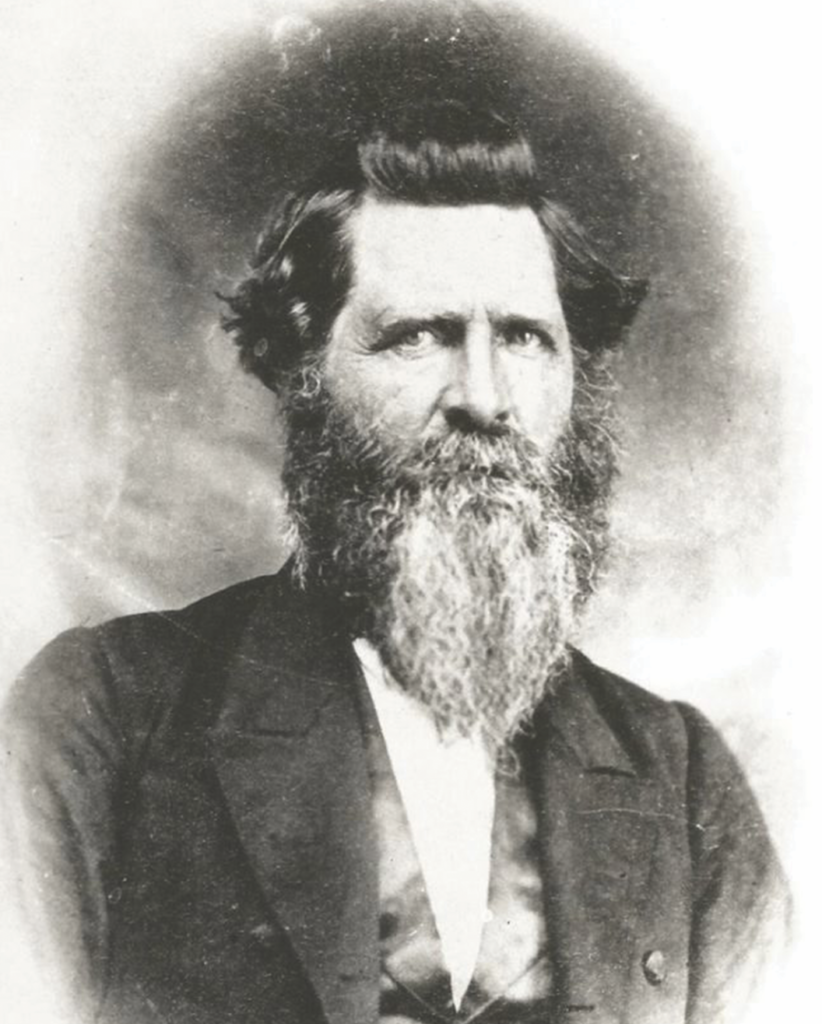
In her account of the long journey Rousseau wrote lyrically about all she saw and experienced—broad rivers, birds, the tallgrass prairie, thunderstorms, Indian encounters, sickness among the party and the trip mileage. She also shed light on the sometimes-abrasive personality of their tough, no-nonsense wagon master. Take, for example, her July 7–8 entry, written while the party rested at Fort Laramie:
“We have to keep close watch day and night over the stock. Mr. Earp went out to see about the guards (military guards) and found they had gotten up a dance. And he told them they must quit their dancing and be on duty.
One of the soldiers told him to mind his own business and ordered him off. It made him [Nick] awful mad, and he was for killing. He used very profane language; he could hardly be appeased. But he cooled down after a while, and all was quiet.”
As the wagons rolled on in the still summer heat, party members grew testy, and dissension spread within the ranks. Of course, Earp’s cantankerous demeanor didn’t help. On July 30, as the train approached Fort Bridger (in what would become Wyoming), Rousseau again had reason to mention Nick:
“Earp got angry with the whole train because they passed him. He took it as an insult, talked pretty hard to all. Some thought he had taken a little too much liquor. He used very profane language and told the whole train that he would give up the captaincy unless they would adhere to the rules he gave. After being detained an hour or more very unpleasantly, we rolled on.”
LIKE FATHER, LIKE SONS
Her Nov. 24 entry, describing the aftermath of a fight between Warren and another boy in the train, affirmed the truth of the expression “the apple doesn’t fall far from the tree”:
“This evening Mr. Earp had another rippet with Warren [Earp’s youngest son] for fighting with Jimmy Hatten. And then he commenced about all the children. Used very profane language and swore if the children’s parents did not correct their children, he would whip every last one of them. He still shows out more and more every day what kind of man he is.”
Warren’s first documented altercation was a preview of the Earp temperament that would plague Nick’s youngest son to his last days.
The Earps’ seven-month saga finally ended when they arrived in San Bernardino on Dec. 20, 1864, and set up camp near present-day Meadowbrook Park, a spot then just east of town. Within days Nick had rented a farm on the Carpenter Ranch, in what is now the city of Redlands. In an April 2, 1865, letter to one-time Pella neighbor and friend James Copla, Nick touted his family’s new home in a update rife with misspellings:
“Oh don’t I wish you and anay others of my friends was here to help me to eat apple peaches and graps this fall and drink wine.…This is the finest climate in the world altho I dont know that I shall stay here and I shall not fore I did not start from home expecting to stop hear when we got heare we are all so near run through that we would not go any longer.…
We can say what we please heare and none dare molest or make us afraid I have enjoyed my self here cince i have bin hear and seen more peace and freedom than I did the last three years I stayed in Iowa heare people that are Seces [favoring secession from the Union] make no boan in saying so they hollow for Jef Davis when they pleas.”
ALONG COTTONWOOD ROW
The Earps soon moved a few miles west along Cottonwood Row (in present-day Loma Linda). At the time the nearby city of San Bernardino was flush with saloons, gambling halls and a flourishing red-light district. It proved Nick Earp’s kind of town, and he managed to find ample excuses to visit the intersection of 3rd and D streets—nicknamed “Whiskey Point,” as it hosted saloons on all four corners. Championing the cause of the common man against what he called the hypocrisy of big business and politicians, Nick became a popular figure and was elected grand jury foreman in 1867.
The Earp patriarch soon learned his sons had inherited their father’s inveterate wanderlust. Historian Glenn G. Boyer once interviewed Estelle Miller, daughter of Wyatt’s sister Adelia. Miller told Boyer that shortly after arriving in San Bernardino, young Wyatt made it known he wasn’t cut out to be a farmer. After slipping away for a few days “vacation,” the teenager dutifully returned home only to receive a whipping from his crusty old man, who then booted him off the family farm.
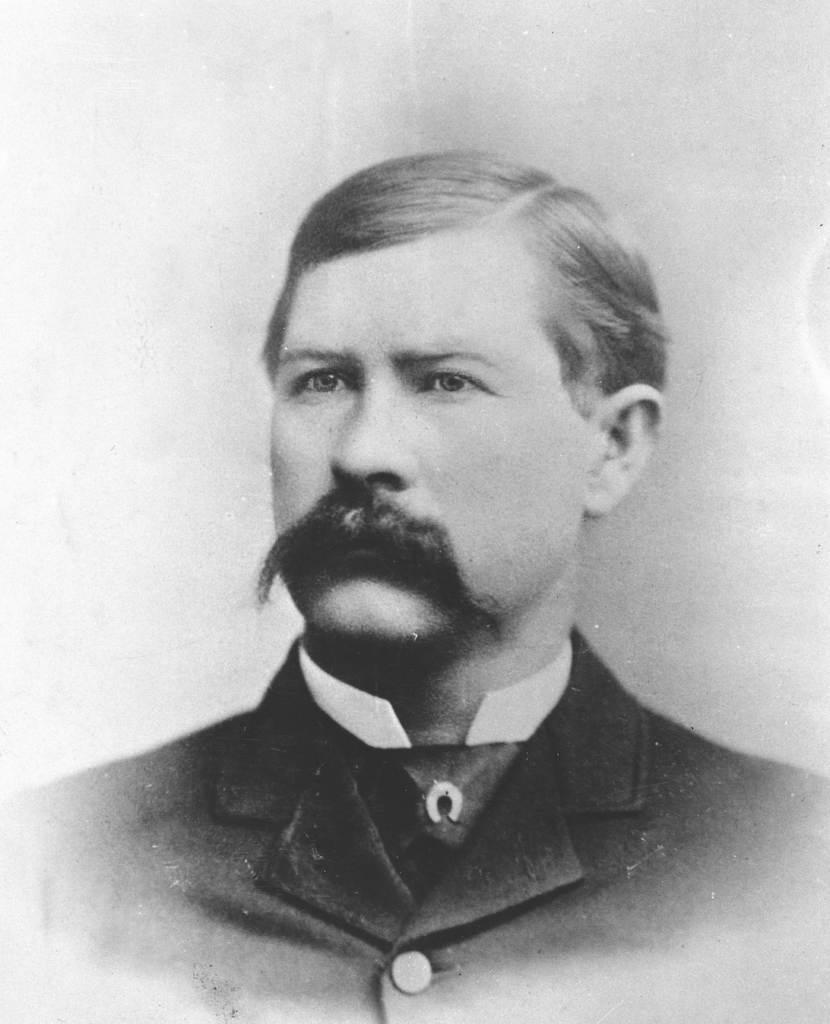
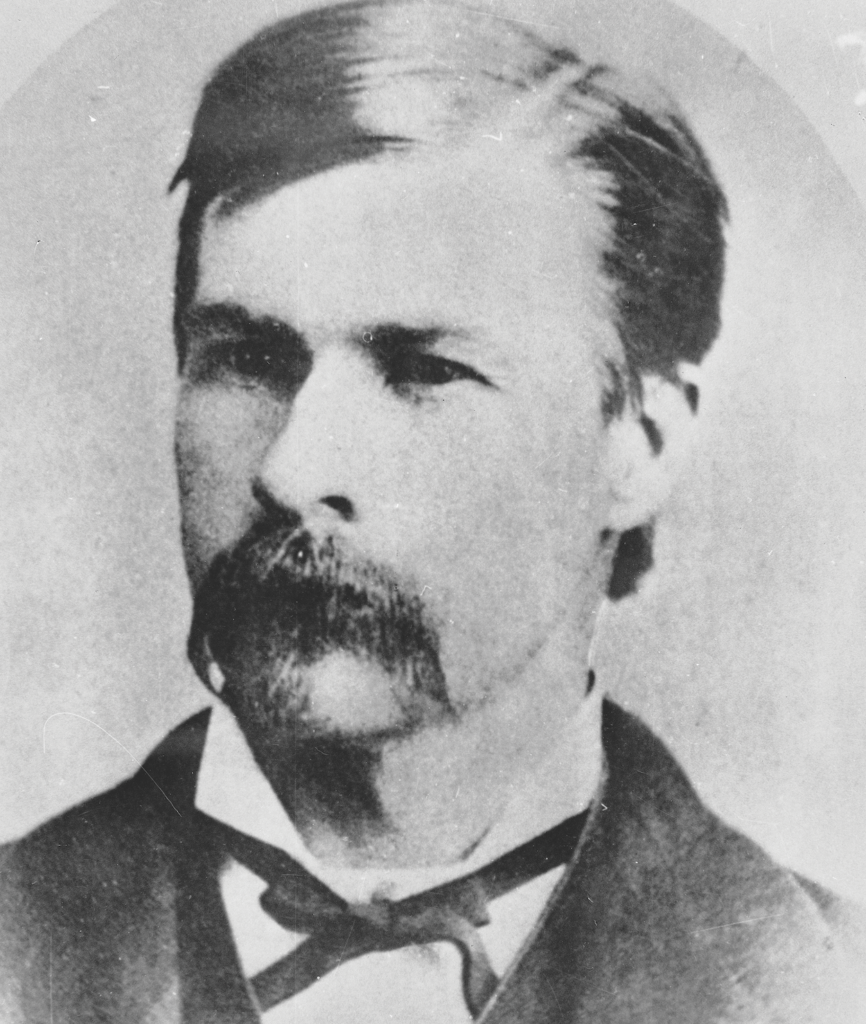
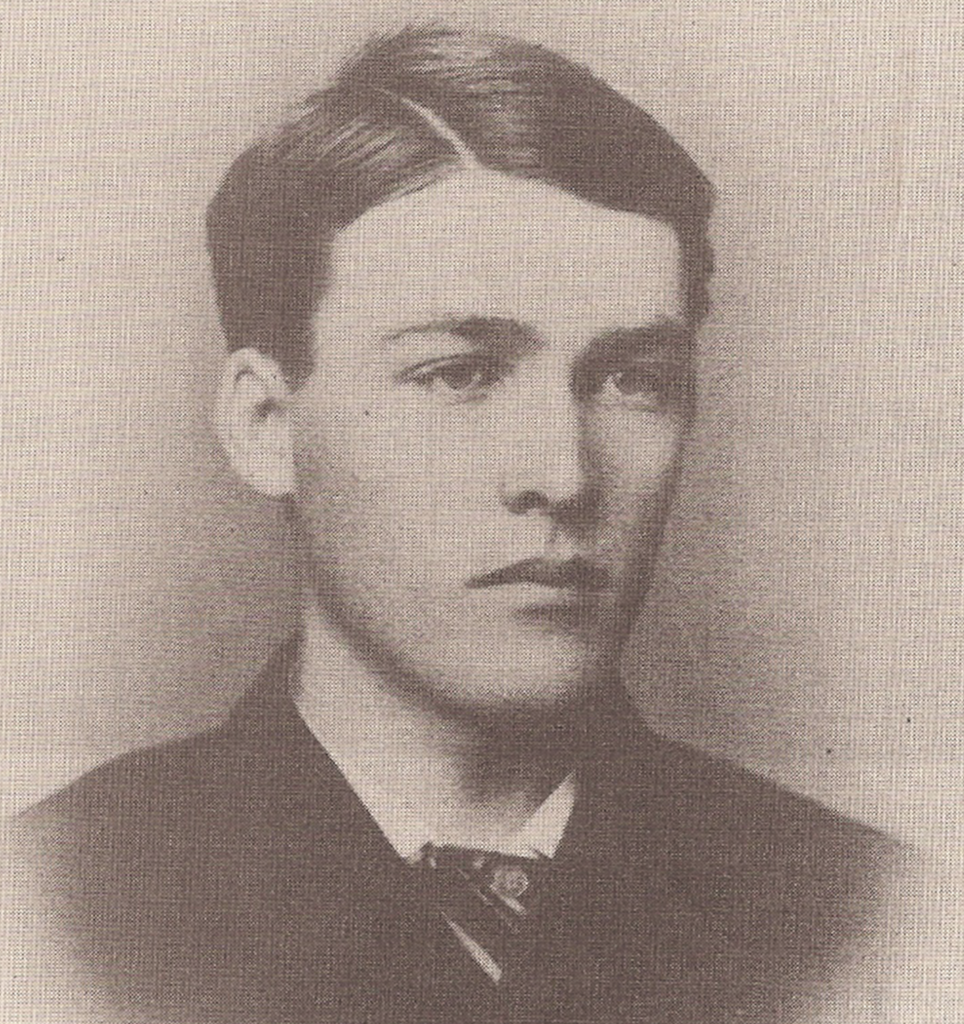
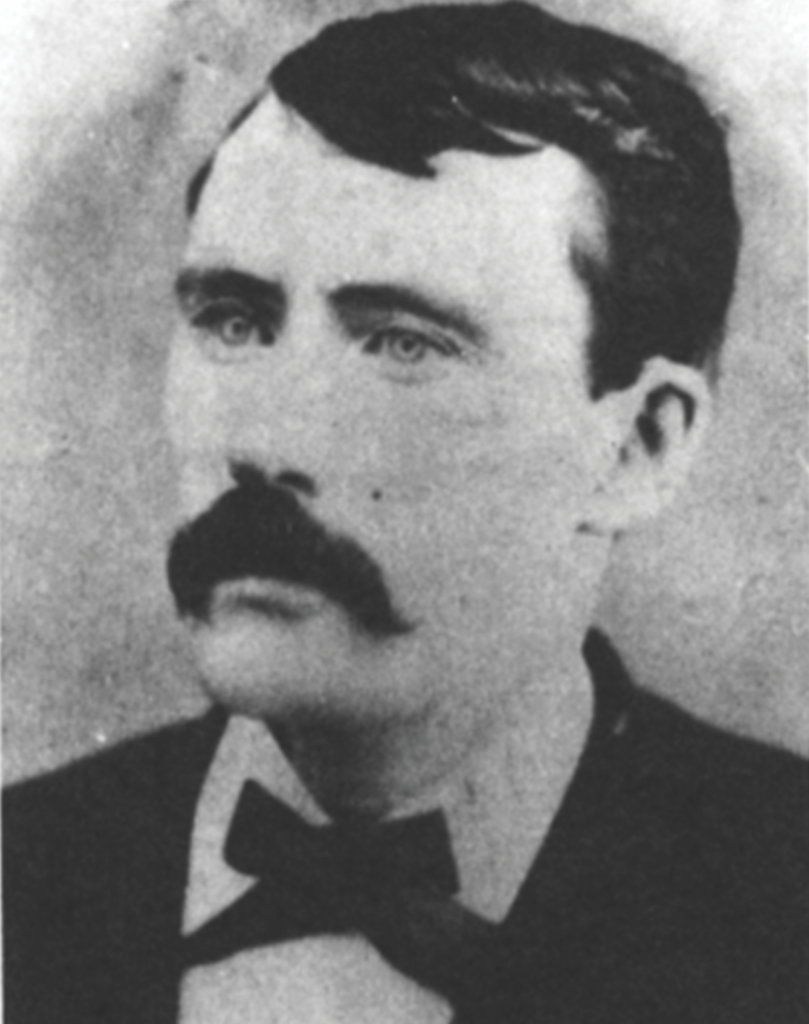
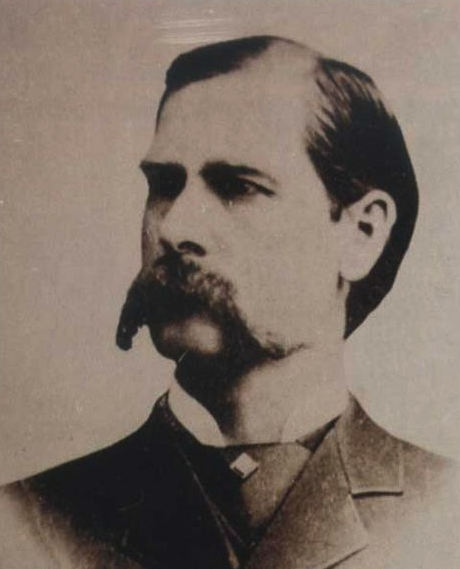
The Earp brothers also had their father’s combative temperament. All were good fighters and had little difficulty facing down any trouble that came their way. Adelia Earp Edwards noted in her unpublished—and possibly spurious—memoir (see related story, P. 34), purportedly written in 1932–34, that when it came to temper, second youngest brother Morgan took no backseat to his brothers:
“Morgan was in a fight with a buffalo hunter one day, and it would have come to shooting if [oldest brother] Newton had not gotten between them and talked them into shaking hands. Morgan had a very terrible temper, while Newton was always very even in his ways.”
Into the late 1860s Nick ran the farm with increasingly less help from his boys. James and Morgan went off to Nevada and Montana Territory, while Virgil and Wyatt worked as teamsters with a Salt Lake–bound wagon train and later for the Union Pacific Railroad. By the fall of 1868 a restless Nick decided to leave the Golden State and return with Virginia to the Midwest.
James, Virgil and Wyatt initially went with them but, being chips off the old block, didn’t stick around long. Soon, with brother Morgan in tow, the older boys sought money and adventure by engaging in such pursuits as buffalo hunting, stage driving and law enforcement. Along the way they met and befriended such colorful characters as Doc Holliday, Bat Masterson and Luke Short. For the time being youngest brother Warren continued to live with his parents.
PULLING INTO DODGE CITY
In 1876 Nick sold property and again pointed his wagon elsewhere, traveling with Virginia, Warren, Adelia and Bill Edwards (Adelia’s future husband). In early 1876 the party pulled into Dodge City, Kan., where Wyatt was working as deputy marshal. According to Allie Earp’s unpublished 1934 memoir, they settled down for the next several months in Peace (present-day Sterling), Kan., where the eldest Earp brother, Newton, lived with wife Jennie. There Virgil and Allie rented a house for the winter.
Soon after Adelia’s wedding to Bill Edwards, on April 9, 1877, Nick again shook the dust off his feet and led an 11-wagon train to California. Among the party that set out on May 8 were Virginia Earp, Warren Earp, Adelia and Bill Edwards, Allie and Virgil Earp, and Newton and Jennie Earp. James and Morgan remained in Dodge with Wyatt.
By late 1877 the Earp caravan—minus Virgil and Allie, who had dropped out at Prescott, Arizona Territory, and Newton and Jennie, who had grown homesick and returned to Kansas—were back in San Bernardino. Nick had trouble finding work.
He bid for a janitor’s position at the courthouse but lost out to another applicant. He and Virginia moved on to the small farming community of Temescal (a few miles southeast of present-day Corona), where he farmed and ran a grocery for the next couple of years. Adelia and Bill lived with them, as did temperamental 22-year-old Warren, who cooled his heels a few more years before striking out in the footsteps of his older brothers.
In the meantime, Nick, likely missing the excitement of town life, moved the family to Colton, a few miles southwest of San Bernardino. In the fall of 1880 he became embroiled in a heated discussion—perhaps of a political nature—at one of his new hangouts. The October 14 San Bernardino Daily Times described the affray:
“This afternoon as Mr. Earp and several other gentlemen were conversing in Mr. Ritler’s store, Mr. Baily came in and made some abusive remarks, interrupting the conversation. Mr. Ritler asked the crowd to leave his store, whereupon Mr. Baily attacked him and left some bruises on his face. No arrests had been made at the hour of going to press.”
Later that fall Nick resurrected an old saloon he renamed the Gem, though by then Colton had more churches than bars. He advertised his joint in the November 27 Colton Semi-Tropic:
“GEM SALOON, N.P. EARP, PROPRIETOR, Keeps on hand the best Whiskey, Wines, Brandies, Gin, Rum, Porter, Beer and Cigars. Fancy Cocktails, Tom and Jerry, at all times whenever called for.
…Call on N.P. Earp and test his superb Tom and Jerry. He is always on hand and ready to wait on customers.”
TROUBLE IN TOMBSTONE
The following year came the main event, the reason the Earp name still resonates today—the so-called Gunfight at the O.K. Corral on Oct. 26, 1881, in Tombstone, Arizona Territory. In that showdown, which claimed the lives of two McLaury brothers and one Clanton brother, Virgil, Morgan and the Earps’ friend Doc Holliday suffered wounds, while Wyatt emerged unscathed.
Back in San Bernardino, Nick Earp must have been pleased his law-enforcing boys had won their fight with the Cowboys, although there is no known public record of his reaction. Nick got into his own scrape the next month, as reported in the San Bernardino Daily Index on Nov. 27, 1881:
“A difficulty occurred in front of the Farmers Exchange Bank this afternoon between Byron Waters and a gentleman named Earp. Earp had been quarreling with a man named Ralph, and Mr. Waters interfering, he received a torrent of abuse from the old gentleman, which he resented in a lively manner. Earp was led off somewhat damaged about the eye and badly lamed by falling.”
Just what set off Nick is unknown, but perhaps the debate arose over what his boys had done in Tombstone. Worse news soon followed out of Arizona Territory. On December 28 shotgun-wielding ambushers shattered Virgil’s left arm during a revenge-motivated assassination attempt. And on March 18, 1882, the Cowboys struck again, gunning down Morgan from ambush as he shot billiards with brother Wyatt.
In the wake of Morgan’s death Virgil took a westbound train to his parents’ home in Colton to recuperate. Nick was elected justice of the peace in 1884, and Virgil, despite his crippled arm, was elected village constable in 1886. The next year, when Colton incorporated, voters chose Virgil as their first city marshal, while Nick served as city recorder.
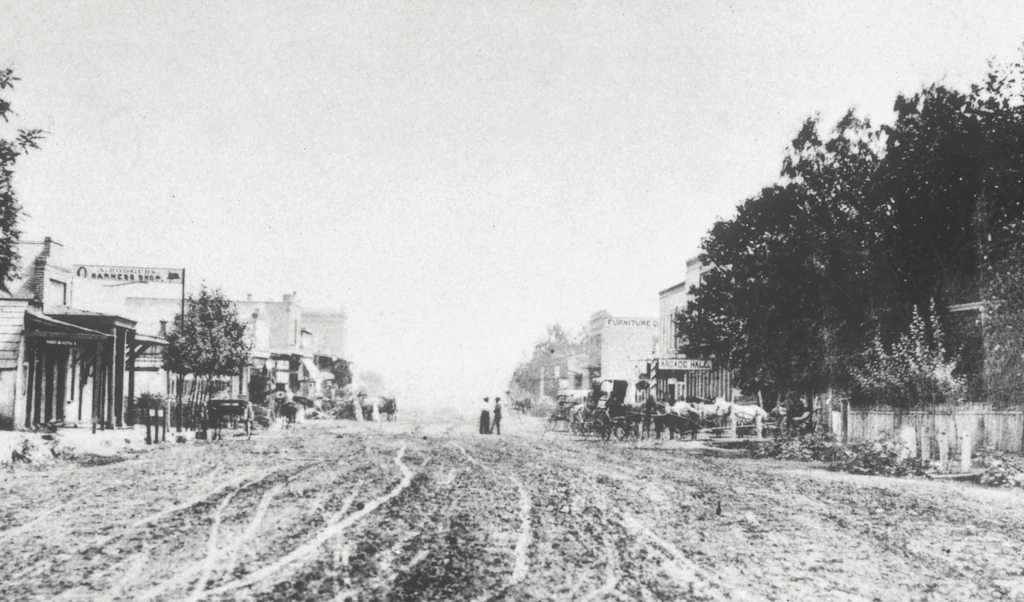
PIONEER SOCIETY MEMBER
In 1888 San Bernardino County witnessed the formation of an organization that would have a profound impact on Nick Earp’s life. That January aging Forty-Niners George W. Suttenfield, Benjamin B. Harris and Sidney P. Waite placed a notice in The Colton Chronicle asking anyone interested in the formation of a society to preserve the history of the county to be present at the courthouse on the 21st of that month.
Thirty former frontiersmen gathered that day as charter members of what became known as the San Bernardino Society of California Pioneers. Under its stringent requirements, prospective members had to have arrived in California before Dec. 31, 1850, and settled in San Bernardino County before April 26, 1853—the date of the county’s incorporation.
As in other fraternal organizations, then and now, members of the so-called Pioneer Society had their share of conflicts. For the most part, however, their meetings revolved around square dances, picnics and holiday celebrations, during which members swapped yarns about the old times. Nick Earp was an eager and active participant.
FEISTY TO THE END
That said, Old Nick could still be feisty. By 1898 the 85-year-old claimed the distinction of being the Pioneer Society’s oldest member and toted a prestigious ceremonial cane at each meeting. On one occasion a younger member angered the short-tempered Earp, and Nick reportedly broke the cane in two over the man’s head.
But Earp did enjoy lighter moments with fellow pioneers, such as the time he engaged in a singing duel with Captain Nelson G. Gill for the prize of a pan full of baked beans. The two sang a medley of traditional songs, including “Erin go Bragh,” “My Heart Is Light,” “Hunters of Kentucky,” “Excelsior” and “The Indian’s Lament.” Each also sang an original, humorous composition. The committee declared the contest a draw and had the duelists split the beans.
Such happy interludes came fewer and farther between for Nick, especially as he lost more family members. His beloved Virginia died on Jan. 14, 1893. Nine months later Nick married widow Annie Elizabeth Cadd Alexander, 30 years his junior. But the pair’s initial infatuation fizzled, they were unable to bridge the generation gap, and their union proved a marriage in name only. Nick often left the San Bernardino ranch Annie had inherited to stay with daughter Adelia in Yucaipa.
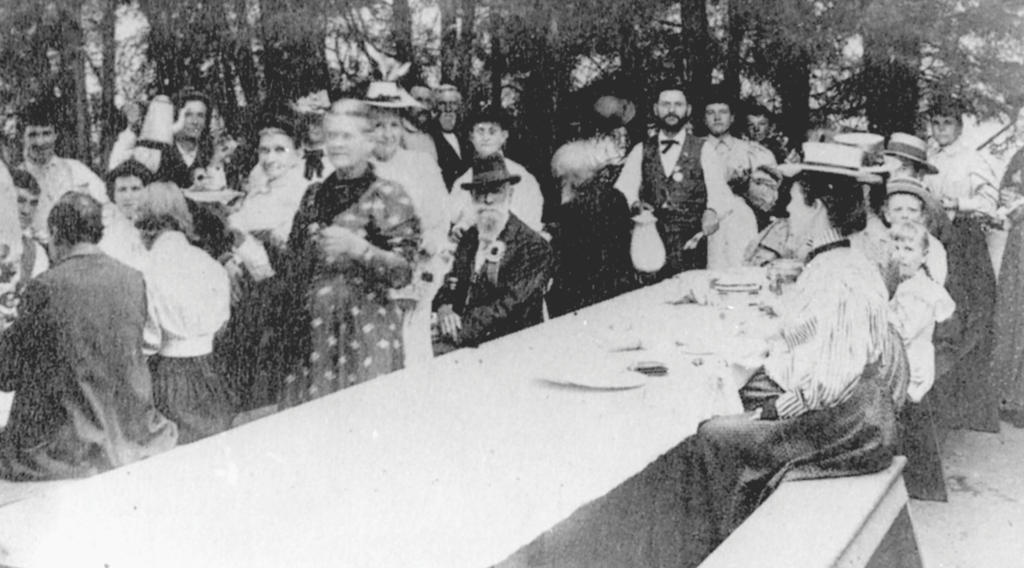
Nick and third wife Annie, who is standing in front of her seated husband, attend a Pioneer Society picnic soon after marrying in 1893. (San Bernardino Historical and Pioneer Society.)
In December 1897 Nick severely injured his left shoulder when thrown from a horse, and thereafter his health steadily declined. It didn’t help when he lost two more sons. First, on July 6, 1900, youngest son Warren, who was prone to heavy drinking, angry outbursts and bouts of violence, was killed in a saloon brawl in Willcox, Arizona Territory.
Then, on Oct. 19, 1905, Virgil died of pneumonia in Goldfield, Nev. Nick ultimately entered a veterans home in Sawtelle, near Los Angeles, where he died at age 93 on Feb. 12, 1907. He had outlived six of his 10 children. Storied family patriarch Nicholas Porter Earp is buried apart from his wives, sons and daughters at the Los Angeles National Cemetery.WW
Nick Cataldo writes a local history column for California’s San Bernardino County Sun and is the author of “Images of America: San Bernardino California” (2002) and “The Earp Clan: The Southern California Years” (2006).
historynet magazines
Our 9 best-selling history titles feature in-depth storytelling and iconic imagery to engage and inform on the people, the wars, and the events that shaped America and the world.


